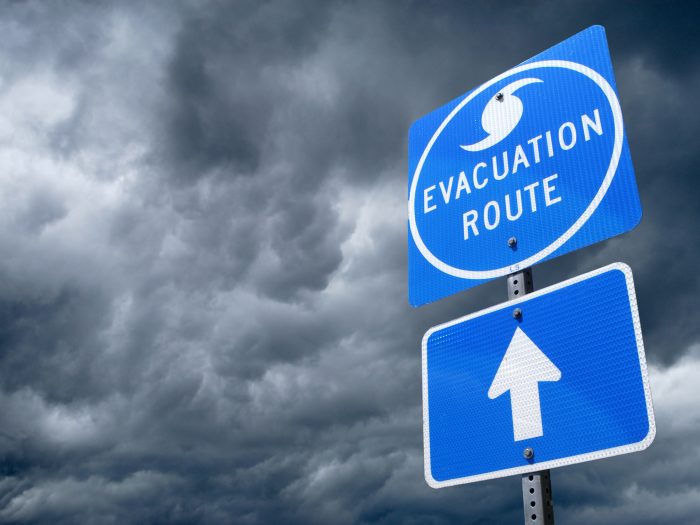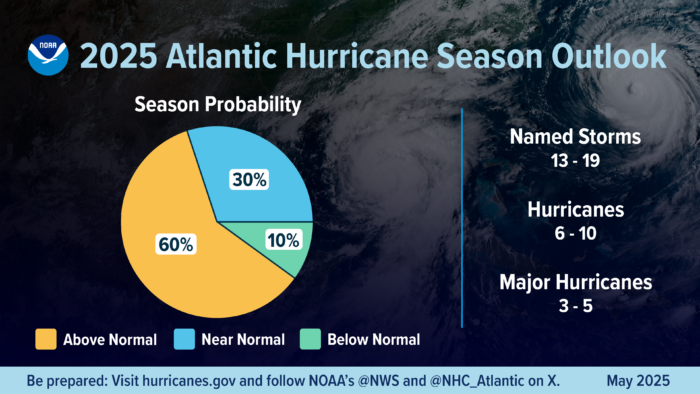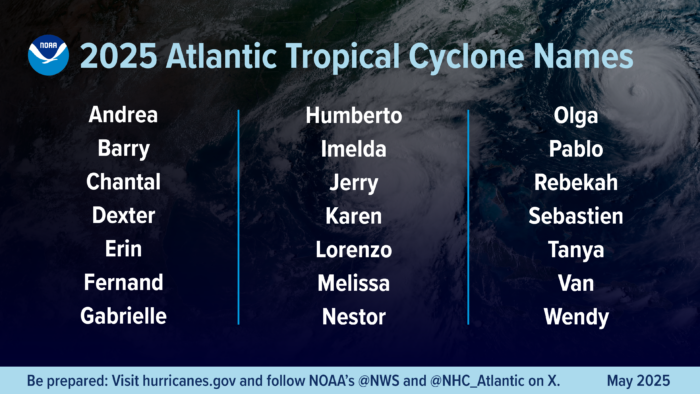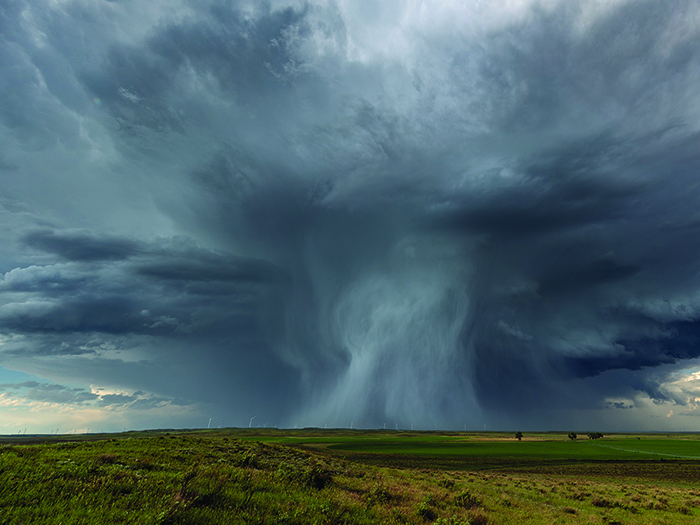2025 Hurricane Season Outlook: NOAA Predicts 60% Chance of Above-Normal Activity

NOAA forecasters predict a 60% chance of an above-normal 2025 Atlantic hurricane season, with up to 19 named storms and as many as five major hurricanes.
The 2025 Atlantic hurricane season, which runs from June 1 to Nov. 30, is expected to bring 13 to 19 named storms with winds of 39 mph or higher, according to the NOAA outlook. Of these, NOAA projects 6 to 10 will strengthen into hurricanes with winds of 74 mph or higher, including 3 to 5 major hurricanes reaching Category 3, 4, or 5 status with winds exceeding 111 mph. The agency reports a 70% confidence level in these predictions.
Multiple environmental factors are converging to create favorable conditions for hurricane development, according to NOAA. ENSO-neutral conditions (neither El Niño nor La Niña), warmer-than-average ocean temperatures, and forecasts for weak wind shear all contribute to the heightened risk. Additionally, increased activity from the West African Monsoon—a primary starting point for Atlantic hurricanes—could provide more tropical waves that seed powerful storms.
The Atlantic Basin continues to experience what meteorologists characterize as a “high activity era,” featuring elevated ocean heat content and reduced trade winds. This combination provides more energy to fuel storm development while allowing storms to form with less disruption from opposing winds.
“In my 30 years at the National Weather Service, we’ve never had more advanced models and warning systems in place to monitor the weather,” said NOAA’s National Weather Service Director Ken Graham. “This outlook is a call to action: be prepared. Take proactive steps now to make a plan and gather supplies to ensure you’re ready before a storm threatens.”
Increasing Risks Beyond Coastal Areas
The dangers posed by hurricane season extend well beyond traditional coastal concerns, according to NOAA.
Recent history demonstrates the growing inland threat, as Acting NOAA Administrator Laura Grimm noted: “As we witnessed last year with significant inland flooding from hurricanes Helene and Debby, the impacts of hurricanes can reach far beyond coastal communities.”
Hurricane Helene caused more than 30 inches of extreme inland rainfall that proved deadly for communities in North Carolina and Tennessee. This inland flooding threat has become an increasing concern for emergency management officials and communities previously considered safe from hurricane impacts.
Enhanced Forecasting Tools
NOAA is implementing several improvements to its hurricane forecasting capabilities for the 2025 season. The Hurricane Analysis and Forecast System will undergo an upgrade expected to improve tracking and intensity forecasts by another 5%, helping forecasters provide more accurate watches and warnings, the agency said.
Communication enhancements include the ability for NOAA’s hurricane centers to issue tropical cyclone advisory products up to 72 hours before storm surge or tropical-storm-force winds reach land—providing communities additional preparation time. The Climate Prediction Center has also extended its Global Tropical Hazards Outlook from two weeks to three weeks.
Technology innovations for this season include a new experimental electronically scanning radar system called ROARS deployed on NOAA’s P-3 hurricane hunter research aircraft. This system will scan beneath the plane to collect data on ocean waves and hurricane wind structure. Additionally, NOAA’s Weather Prediction Center has launched an experimental Probabilistic Precipitation Portal that provides user-friendly access to rainfall and flash flooding forecasts up to three days in advance.
View the NOAA outlook here. &












